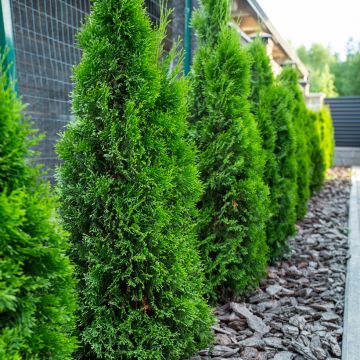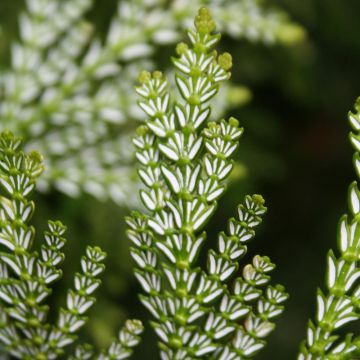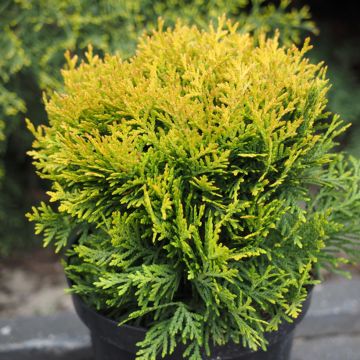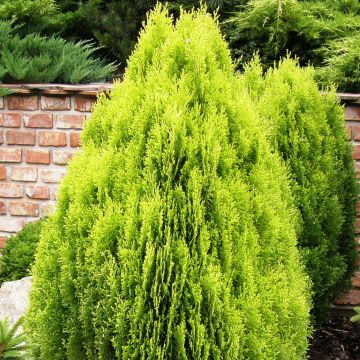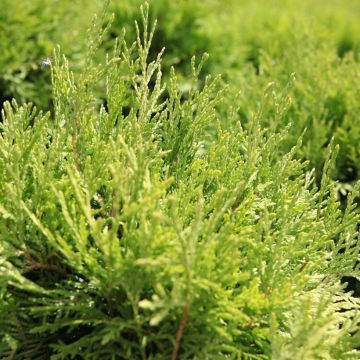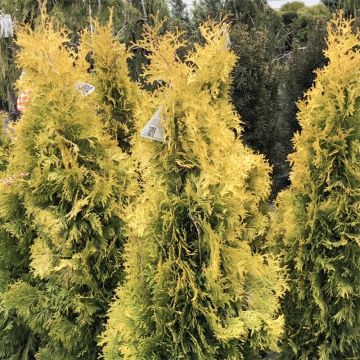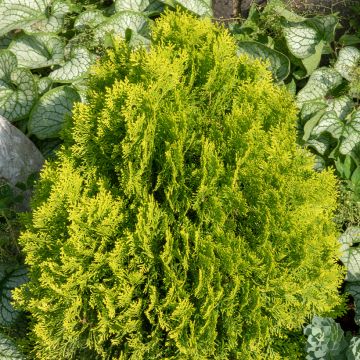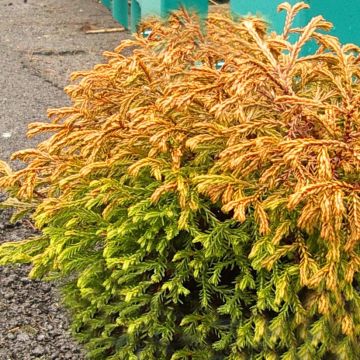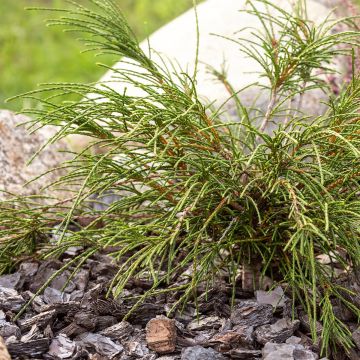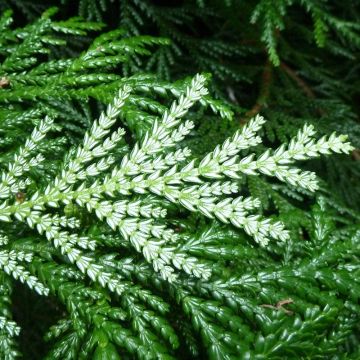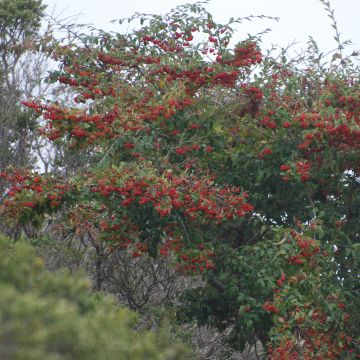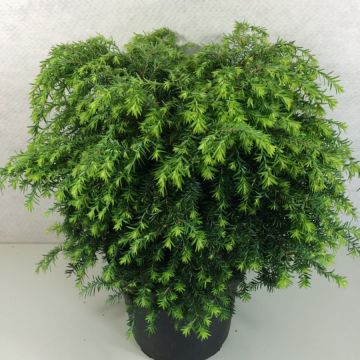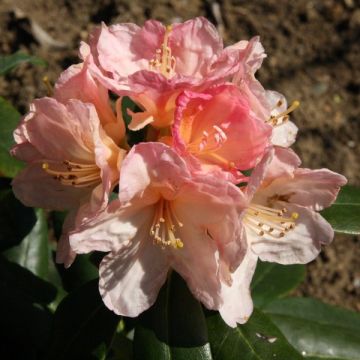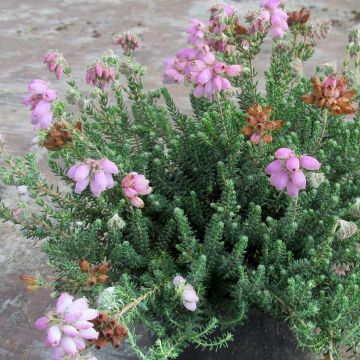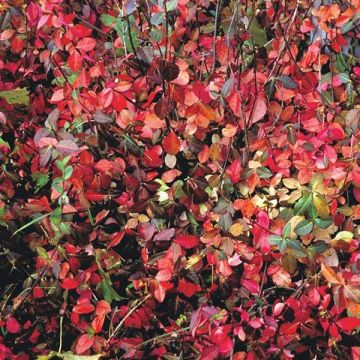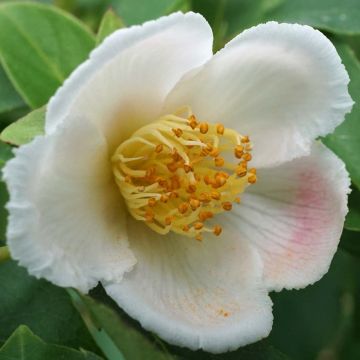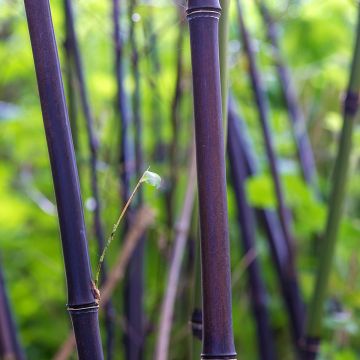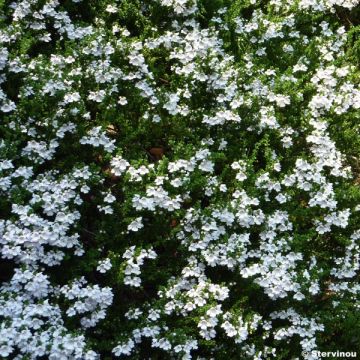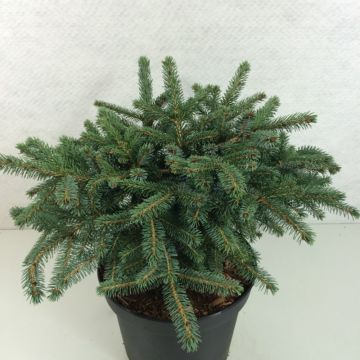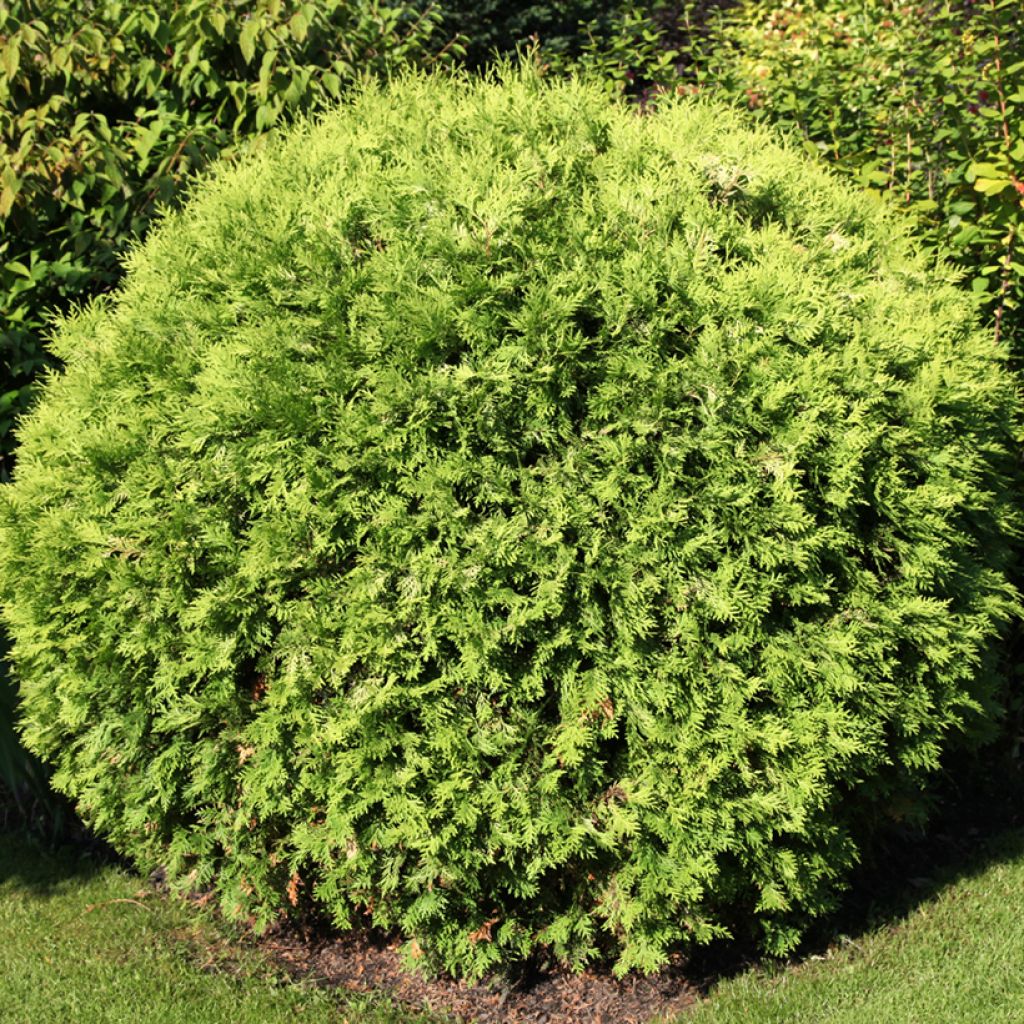

Thuja occidentalis Selena - Arborvitae
Thuja occidentalis Selena - Arborvitae
Thuja occidentalis Selena
Eastern Arborvitae, Northern White Cedar, American Arborvitae
This item cannot be shipped to the selected country
Delivery charge from €6.90
More information
Delivery charge from €6.90
More information
Schedule delivery date,
and select date in basket
This plant carries a 24 months recovery warranty
More information
We guarantee the quality of our plants for a full growing cycle, and will replace at our expense any plant that fails to recover under normal climatic and planting conditions.
From €7.90 for pickup delivery and €6.90 for home delivery
Express home delivery from €8.90.
Does this plant fit my garden?
Set up your Plantfit profile →
Description
Thuja occidentalis 'Selena' is a slow-growing conifer that forms a large, dense, and bright green ball, adorned with yellow to cream shoots. It can be placed in a large rockery, as a standalone specimen, in the centre of a bed, or in a large container on a contemporary terrace. It is a very hardy shrub, decorative in all seasons, and requires little maintenance. It only dislikes prolonged droughts.
Thuja occidentalis 'Selena' is a Polish horticultural selection by Wiesław Wnuk, introduced to the market in 1993. The species, Thuja occidentalis, also known as Eastern Arborvitae or Northern White Cedar, is a persistent conifer from the cypress family native to northeastern North America. It is distributed over a wide geographical area that perfectly reflects the flexibility of its living conditions, from swamps to cliffs, hostile environments that discourage many other competing species. In the wild, it reaches a height of 15 to 20 metres, adopting a beautiful conical habit, and a trunk covered with a highly decorative, reddish-brown, exfoliating bark. It is a very hardy species, well adapted to temperate climates and poor soils, not too dry or wet. Its almost rot-resistant, lightweight, fragrant, and easily flammable wood lends itself to many uses. It has given rise to more than 300 cultivars that have been selected for their ornamental qualities.
The 'Selena' variety forms a well-rounded ball that widens with age. Its growth is slow, so it will reach approximately 1 metre in height and 1.50 metres in width at the age of 20-25 years. This dense and regular conifer has aromatic foliage when crushed, consisting of flattened branches arranged in planes and covered with scale-like, 3 to 5 mm long leaves. Overlapping each other, the leaves give the short twigs a fan-like appearance. The mature foliage is a very bright light green, while the young shoots change from golden yellow to cream.
The 'Selena' Western Arborvitae easily fits into a small garden, a rockery, can be used to create a privacy screen, or planted in groups of three near an entrance. It also adapts well to container cultivation. This elegant variety creates beautiful scenes with more disorderly shrubs such as abelias or Pyracantha 'Sparkler'. It can also be combined with complementary grasses or heathers. The architectural qualities of conifers naturally stand out in a contemporary or French garden. These plants, with their reassuring permanence, structurally enhance a bed, mark pathways, or border a terrace. The key is to play with volumes and colours.
Plant habit
Foliage
Botanical data
Thuja
occidentalis
Selena
Cupressaceae
Eastern Arborvitae, Northern White Cedar, American Arborvitae
Cultivar or hybrid
Other Thuya - Thuja
Planting and care
Thuja occidentalis 'Selena' should be planted from September to November and from February to May in deep, loose, preferably light, acidic, neutral, or even slightly alkaline soil, which remains slightly moist in summer. It is sensitive to extreme heat and prolonged drought. Plant it in a sunny location. Soak the root balls thoroughly before planting. Optionally, add organic fertiliser at the time of planting and water generously during the first few years and in case of prolonged dry periods. In very poor soil, you can apply a special conifer fertiliser every year in April and weed the soil in summer. This hardy conifer (tolerates at least -25°C) does not require pruning.
Planting period
Intended location
Care
This item has not been reviewed yet - be the first to leave a review about it.
Evergreen shrubs
Haven't found what you were looking for?
Hardiness is the lowest winter temperature a plant can endure without suffering serious damage or even dying. However, hardiness is affected by location (a sheltered area, such as a patio), protection (winter cover) and soil type (hardiness is improved by well-drained soil).

Photo Sharing Terms & Conditions
In order to encourage gardeners to interact and share their experiences, Promesse de fleurs offers various media enabling content to be uploaded onto its Site - in particular via the ‘Photo sharing’ module.
The User agrees to refrain from:
- Posting any content that is illegal, prejudicial, insulting, racist, inciteful to hatred, revisionist, contrary to public decency, that infringes on privacy or on the privacy rights of third parties, in particular the publicity rights of persons and goods, intellectual property rights, or the right to privacy.
- Submitting content on behalf of a third party;
- Impersonate the identity of a third party and/or publish any personal information about a third party;
In general, the User undertakes to refrain from any unethical behaviour.
All Content (in particular text, comments, files, images, photos, videos, creative works, etc.), which may be subject to property or intellectual property rights, image or other private rights, shall remain the property of the User, subject to the limited rights granted by the terms of the licence granted by Promesse de fleurs as stated below. Users are at liberty to publish or not to publish such Content on the Site, notably via the ‘Photo Sharing’ facility, and accept that this Content shall be made public and freely accessible, notably on the Internet.
Users further acknowledge, undertake to have ,and guarantee that they hold all necessary rights and permissions to publish such material on the Site, in particular with regard to the legislation in force pertaining to any privacy, property, intellectual property, image, or contractual rights, or rights of any other nature. By publishing such Content on the Site, Users acknowledge accepting full liability as publishers of the Content within the meaning of the law, and grant Promesse de fleurs, free of charge, an inclusive, worldwide licence for the said Content for the entire duration of its publication, including all reproduction, representation, up/downloading, displaying, performing, transmission, and storage rights.
Users also grant permission for their name to be linked to the Content and accept that this link may not always be made available.
By engaging in posting material, Users consent to their Content becoming automatically accessible on the Internet, in particular on other sites and/or blogs and/or web pages of the Promesse de fleurs site, including in particular social pages and the Promesse de fleurs catalogue.
Users may secure the removal of entrusted content free of charge by issuing a simple request via our contact form.

































